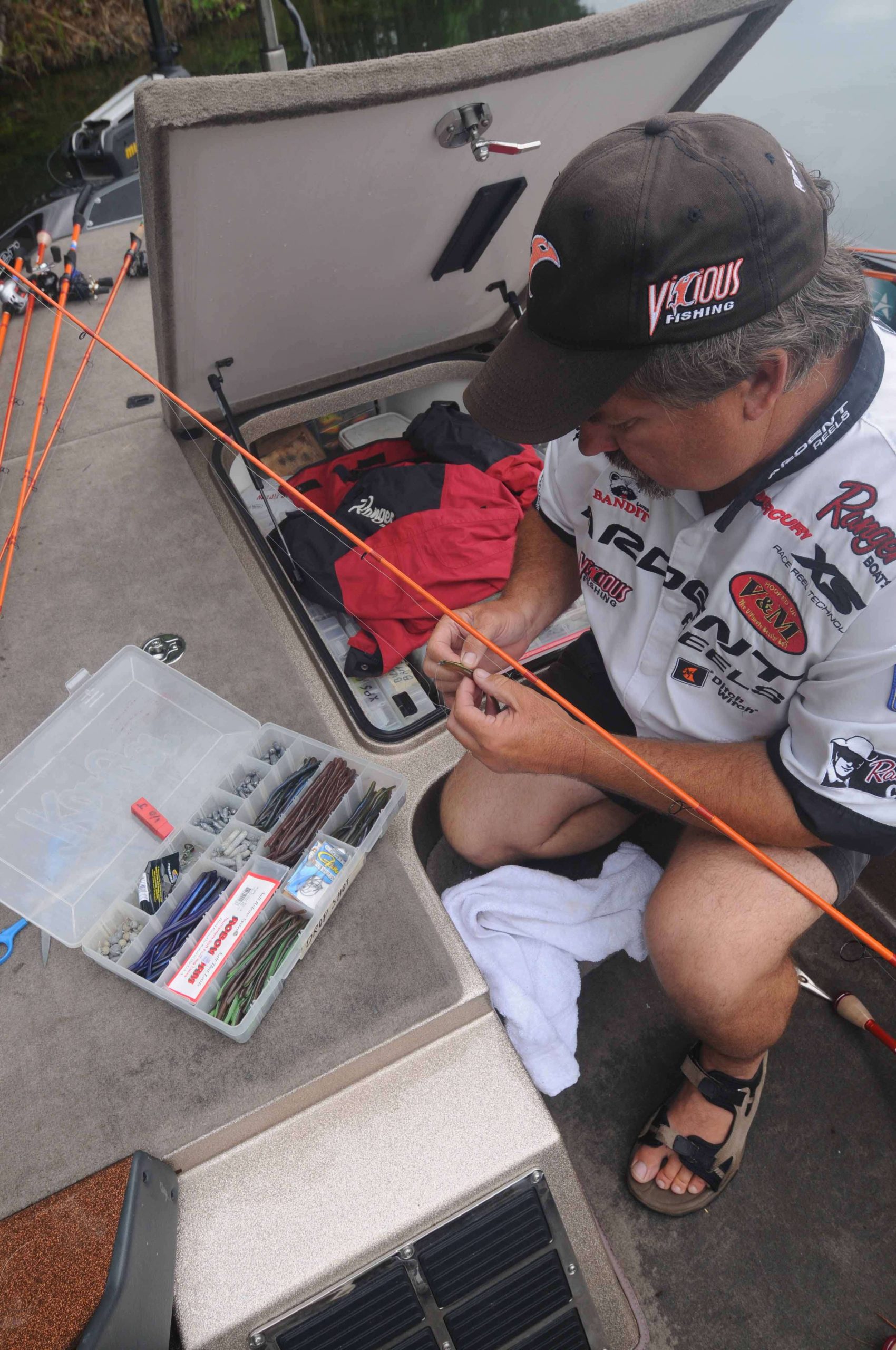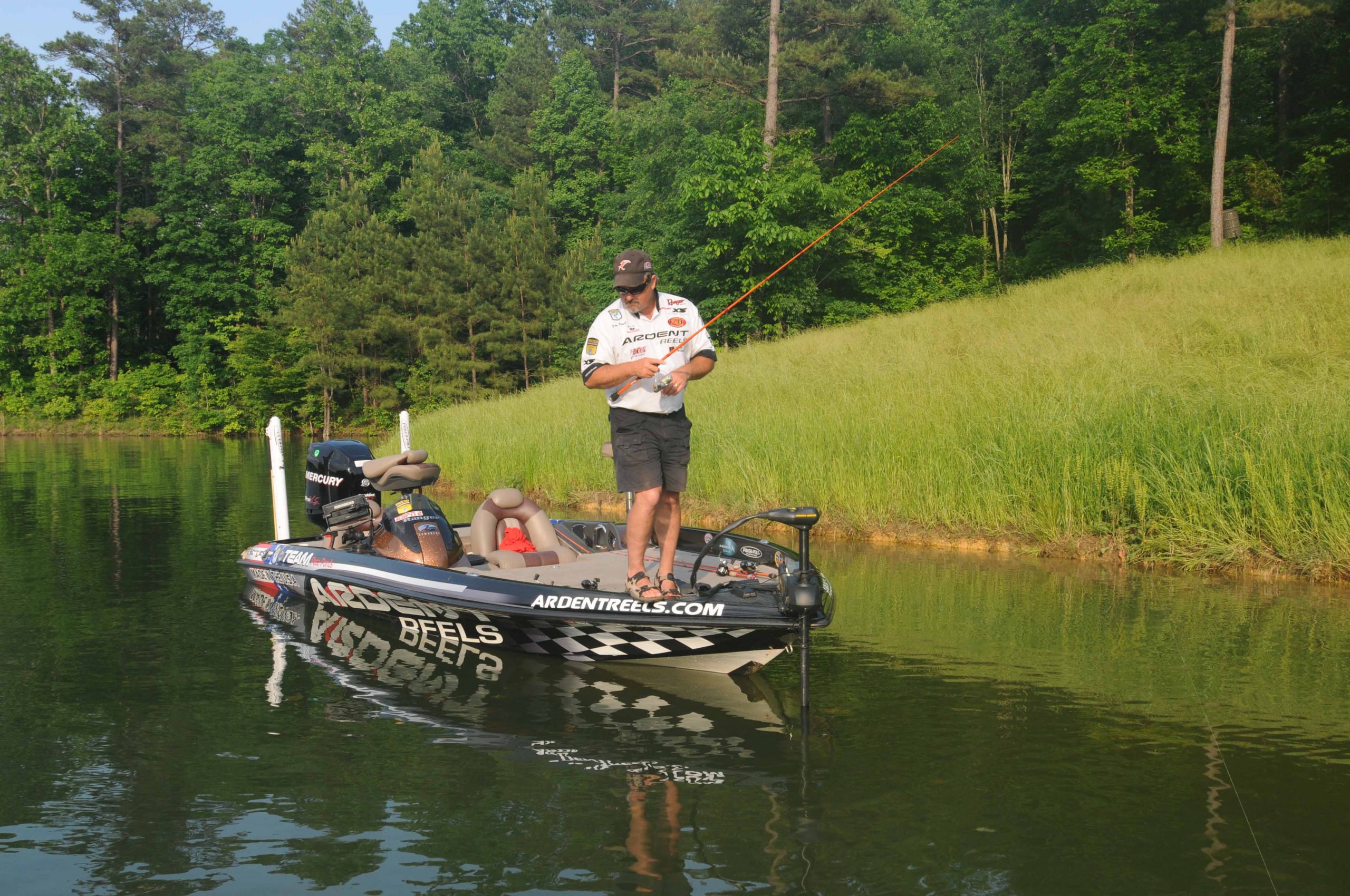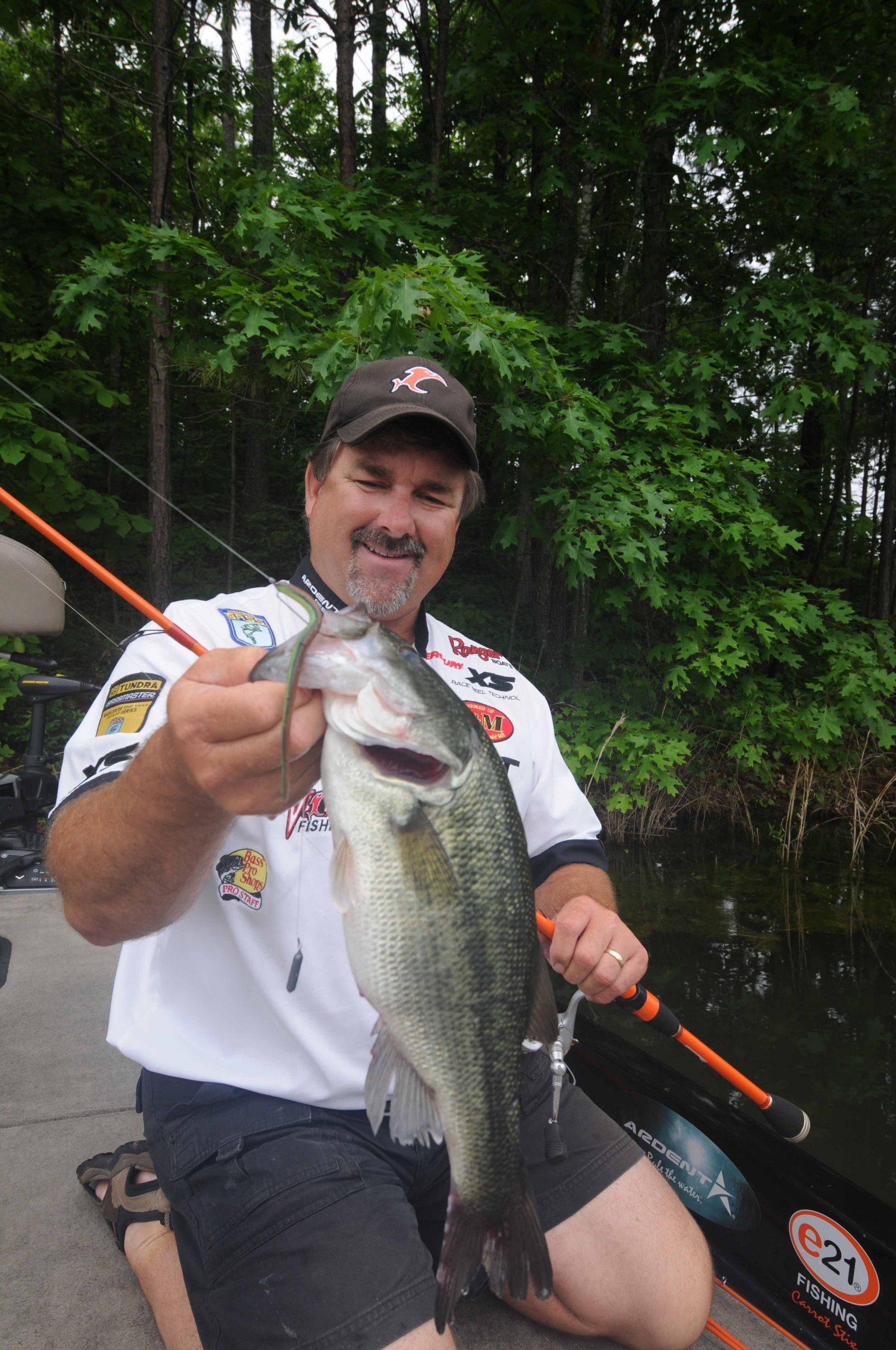
When bass begin their fall migration to the shallows, one of their favorite stops along the way is a stump located at the edge of a creek channel.
Since stumps are also popular targets for anglers to hit as they follow bass to the shallows, these transition spots get hammered with spinnerbaits, crankbaits, jigs and other power baits.
Count Mississippi pro Pete Ponds as one of those who likes to flip jigs or bang crankbaits into the stumps, but he changes tactics when he notices the stumps are receiving heavy fishing pressure. Then the Elite Series competitor breaks out his spinning tackle and ties on a drop shot rig.
“Bass see jigs flipped into those stumps all the time, so this is almost a finesse fishing tactic,” Ponds said. “It is an awesome way to catch fish.”
Ponds discovered the drop shotting technique while sight fishing one spring.
“I couldn’t see the beds, but I could see the darks spots which I noticed were some stumps out in front of the bedding areas,” Ponds said. “So I started drop shotting those dark spots and started catching fish.”
He later found out the same tactic worked on bass hiding in the stumps during the fall migration.
Submerged isolated stumps produce best for this presentation, so the key to finding these targets is a good pair of sunglasses with the right lens tint. Ponds favors yellow lenses for finding the dark spots, but he suggests other colors such as amber might work as well.

Looking for dark spots in the water with a good pair of sunglasses is the key to drop shotting stumps.
“I believe everyone’s eyes are different so you might see in the water a little differently,” he said. “I would advise that you experiment and find out what color lens works best for you.”
Once he pinpoints his target, Ponds approaches the stump in the same manner as a flipping presentation, keeping the boat about 20 feet or less from the cover and making a short pitch. After the drop shot weight hits the bottom, Ponds starts shaking his bait on a slack line, which prevents the weight from moving away from the stump and pulling the bait out of the strike zone.
“I want the weight to maintain contact with the bottom, but I want to move the lure,” he said. “You don’t have to work it too much because you can’t hold it still even if you wanted to.”
He keeps a constant vigil on his line while shaking and sets the hook whenever he notices any unusual line movement.
After shaking the rig in place for a few seconds, Ponds retrieves the lure and pitches to the other side of the stump. He usually saturates the stump with pitches to all of its sides before moving on to the next target.
Pond’s drop shot rig consists of a 6-inch Roboworm Straight Tail Worm in a bold bluegill hue rigged Texas style on a 2/0 Roboworm ReBarb hook. He ties the hook with a Palomar knot to make the worm stand up better and leaves an 8-inch drop line for attaching a 1/4-ounce elongated weight.

Pitching a drop shot rig to stumps helps Pete Ponds catch a quick limit when bass ignore power baits.
The B.A.S.S. pro believes the long slender weight works better for this tactic because it slides through the stump’s roots easily whereas round weights tend to roll and hang up in the obstacles.
7-foot medium-heavy Duckett Fishing Micro Magic rod and Ardent S2500 spinning reel are Ponds’ favorite combo for drop shotting the stumps. He employs a main line of 10-pound test Vicious Braid tied with a Uniknot to a 3-foot leader of 8-pound test Vicious Fluorocarbon.
Drop shotting has produced 60 to 70 bass a day, including some 6- and 7-pounders, for Ponds when the fish move to the stumps in the spring and fall. Whenever the conventional ways to hit a stump fail, Ponds depends on the drop shot to catch a quick limit.





